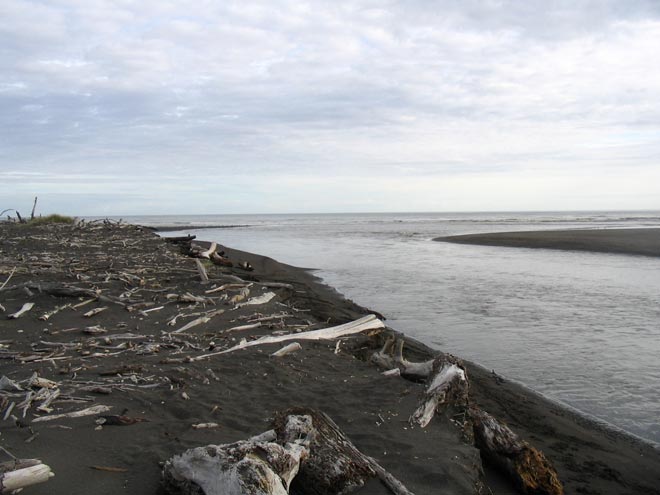
The Whangaehu River mouth is a long way from Mt Ruapehu. Yet there was evidence there of the lahar that caused the Tangiwai disaster in 1953. Captain N. T. Campbell, a retired master mariner, saw the effects of the lahar up close.
What\'s you story?
Contributed by Nick Campbell.
Shortly after Boxing Day, about 27 or 28 December, my vessel left Wellington bound for Castlecliff (Wanganui). It was a short overnight voyage and we were due off the bar at around 5 a.m. The night was calm and clear with slight seas. At about 3 a.m., and well off the coast, I was taking the watch when I suddenly noticed what appeared to be breakers close ahead. Believing the vessel had been set inshore by unknown circumstances I immediately ordered the helm hard to port and began urgently ringing for an astern movement on the engines. Before any of these orders could take effect we were in the midst of a 50-metre wide ring of thickly packed debris. I could see tree trunks and other types of litter. As the ship rode through this, the carcass of a cow, illuminated a ghastly green in the glow of the starboard running light, rolled over and passed beneath the bridge wing. The whole was interspersed with some sort of white froth, which I had mistaken for breaking water.
At this instant the engineer on watch, who had stopped both engines preparatory to reversing them, began racing them hard astern. I now realised that rather than the ship being in danger of grounding, we had held our course and were still some 20 kilometres from the coast. We were forging through a debris field spreading far into the Tasman Sea from the Whangaehu River mouth. On the other side of this floating barrier the water was highly discoloured and silt-laden. Because of the density of the debris I immediately had the engines stopped and allowed the ship to drift through the debris because of the real possibility of damage to the screws. After ringing all clear and getting under way again, I remember the watch engineer being annoyed with me for asking for emergency action without forewarning. He hadn’t seen what I had seen; but I settled him down amicably.
Discoloured water is quite normal around river mouths and is often edged with a foamy froth where the silt laden fresh water, differing in specific gravity to salt water, takes some time to merge. In this case, however, it was forcing the huge ring of debris across a front that must have been near 20 kilometres in radius. Much of this debris fouled the coastal beaches south of the Whangaehu River for many months afterwards.
Using this item
Te Ara - The Encyclopedia of New Zealand
Photograph by Emma Dewson
This item has been provided for private study purposes (such as school projects, family and local history research) and any published reproduction (print or electronic) may infringe copyright law. It is the responsibility of the user of any material to obtain clearance from the copyright holder.











Add new comment